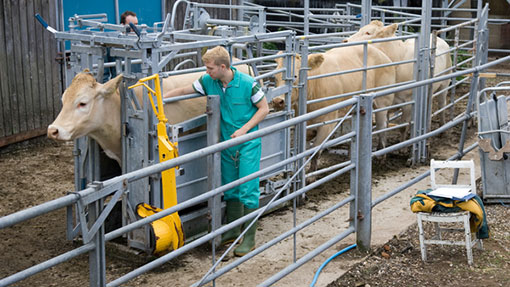Bovine TB eradication a step closer in Ireland

The Irish government has said TB eradication is now a “practicable proposition” in Ireland after latest figures showed a substantial drop in reactor numbers in 2013.
Last year, 15,612 cattle tested positive for TB in the country, which represents a 15% reduction on 2012 levels.
This is a record low since the start of the eradication programme in Ireland in the 1950s.
Overall, the number of reactors has declined by almost 50% last year compared with about 30,000 in 2008.
About 6,000 badgers are culled annually in Ireland by trained government staff.
Badger culling is confined to breakdowns where epidemiological investigation concludes they are part of the problem.
“The department believes that, while it is difficult to quantify the precise impact of badger culling on the reduction in the incidence of TB, much of the improvement in the situation is due to the badger removal programme,” said the Irish Department of Agriculture, Food and Marine in a statement.
Also see: Irish bovine TB drop attributed to badger cull
The government described a recent peer-reviewed study – Bovine tuberculosis trends in the UK and the Republic of Ireland, 1995-2010 (Abernethy et al,., 2013) – published in the Veterinary Record, as “noteworthy”, in this context.
“During the period studied, the animal incidence of TB increased by 380% in England, by 190% in Wales and 74% in Northern Ireland,” it explained.
“On the other hand, the animal incidence of TB in Ireland fell by 32% in the same period (and a further 20% since the study).”
The Irish government said that it was “significant” that the removal of badgers was not practised in England, Wales or Northern Ireland.
Animal prevalence of TB in Ireland was 0.3% in 2012, compare with 0.66% in Northern Ireland, said the Irish government.
“In effect, the department believes that the badger culling programme has brought about a situation where, for the first time since the programme was introduced in the 1950s, eradication is now a practicable proposition,” it added.
The Irish government said it was also conducting extensive research into badger ecology and developing a badger vaccination programme.
Field trials are being undertaken in several Irish counties over three to four years, with continuous monitoring of the population to assess the impact of the vaccine on the incidence of disease in vaccinated and non-vaccinated control badger populations.
The objective of the research is to replace badger culling with vaccination when research demonstrates this is possible.
Research in Ireland has also shown that oral vaccination of badgers in a captive environment with the Bacillus Calmette-Guérin (BCG) vaccine generates “high levels of protective immunity against bovine TB”.
It is hoped that field trials will lead to the launch of a badger vaccination strategy as part of a national TB control programme in Ireland.
But as it will be “some years” before the benefits of vaccination can be seen, the targeted culling of badgers will continue “in the medium-term”.
More news on bovine TB and the badger cull
